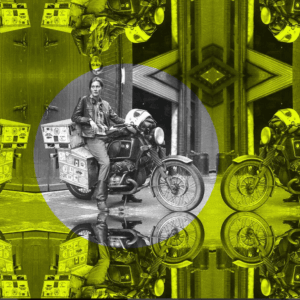Countering women’s marginalisation by appropriating the model of the urban ‘boys’ club’. Karen Burns recalls the activism and intellectual engagement of E1027.
E1027 Women’s Architecture Collaborative was a single-sex coalition of women working in architecture as students, graduates, practitioners and academics. The collective was founded in Melbourne in 1990 by a group of recent women graduates and academics associated with the RMIT Architecture Department. Like many activist moments, it had a brief but significant flame.
E1027 was an urban club, following in the shadow of all the societies and associations that had emerged in cities since the late eighteenth century. Clubs offer networks, sociability and influence, and are important sites of identity formation. Clubs and associations foster an “organised sociability” in the words of French historian Maurice Agulhon. E1027 was consciously founded as a club by women who were mindful of the tradition of the urban club as an important resource for men, particularly for artists, architects and designers. This was also our conscious pun on the gendered patterns of architecture’s design-studio culture, practice and academia; described in crude, vernacular terms as a ‘boy’s club’.
We deliberated over our name, determined to question orthodoxies of authorship and the star system but worried about being written off as counter-culture dwellers. We were rescued from this dilemma by Gail Pini’s inspired suggestion of E1027.
E1027 was the house designed in the 1920s by Anglo-Irish architect Eileen Gray at Cap Le Martin on the south coast of France. In the late 1980s, a decade after Gray’s death, her star was rising once more when dedicated friend and biographer Peter Adam recovered her design and building work from years of obscurity, or worse still, erroneous misattribution to Le Corbusier. Gray’s talent, subsequent marginalisation and near-erasure from history were symbolic of the ongoing difficulties faced by women in the profession.
E1027 attracted women across generations, in parallel professions and creative industries. I have a surviving membership list, from March 1991, of 80 members. Subscribers included established architects such as Maggie Edmond, Anne Cunningham, Ann Keddie, Mary Ruth Sindrey, Val Austin, and Sue Dance as well as an up-and-coming generation of women: Eli Giannini, Mardi Butcher, Jill Garner and Anna Ely. Women artists such as Kathy Temin, Sarah Curtis, Lauren Berkowitz and Jan Nelson were also on the list. We met in the city, I think on a monthly basis – I only have an irregular set of surviving archives. We had speakers and sometimes drinks and sometimes dinner. We discussed issues in theory (Antonia Bruns on film theory and architecture), history (me on the gendered construction of Marion Mahony and Walter Burley Griffins’ partnership), presentations by women practitioners (Mardi Butcher, Anne Cunningham, Astrid Huwald, Esther Charlesworth, Wendy Morris). We discussed issues particular to women and issues of interest.
A number of factors contributed to E1027’s loss of energy after a couple of years. Some of these routinely beset organisations based on free time, volunteer labour and the energies of key individuals. Dedicated members left to undertake further study or jobs elsewhere. A persistent tension in the idea of a women-only club had remained a source of discontent for some members, as had the decision to hold meetings in the Lyceum Club, a single-sex club for university women, a venue some found elitist. E1027 sought to ameliorate women’s marginalisation in the profession by offering intellectual exchange and discussion. The founding of a single-sex women’s architecture group was a provocative, activist gesture. Twenty-two years on, the issue of women’s absence or marginalisation and the counter-act of establishing women-only scholarships or prizes or even research studies remains contentious.























